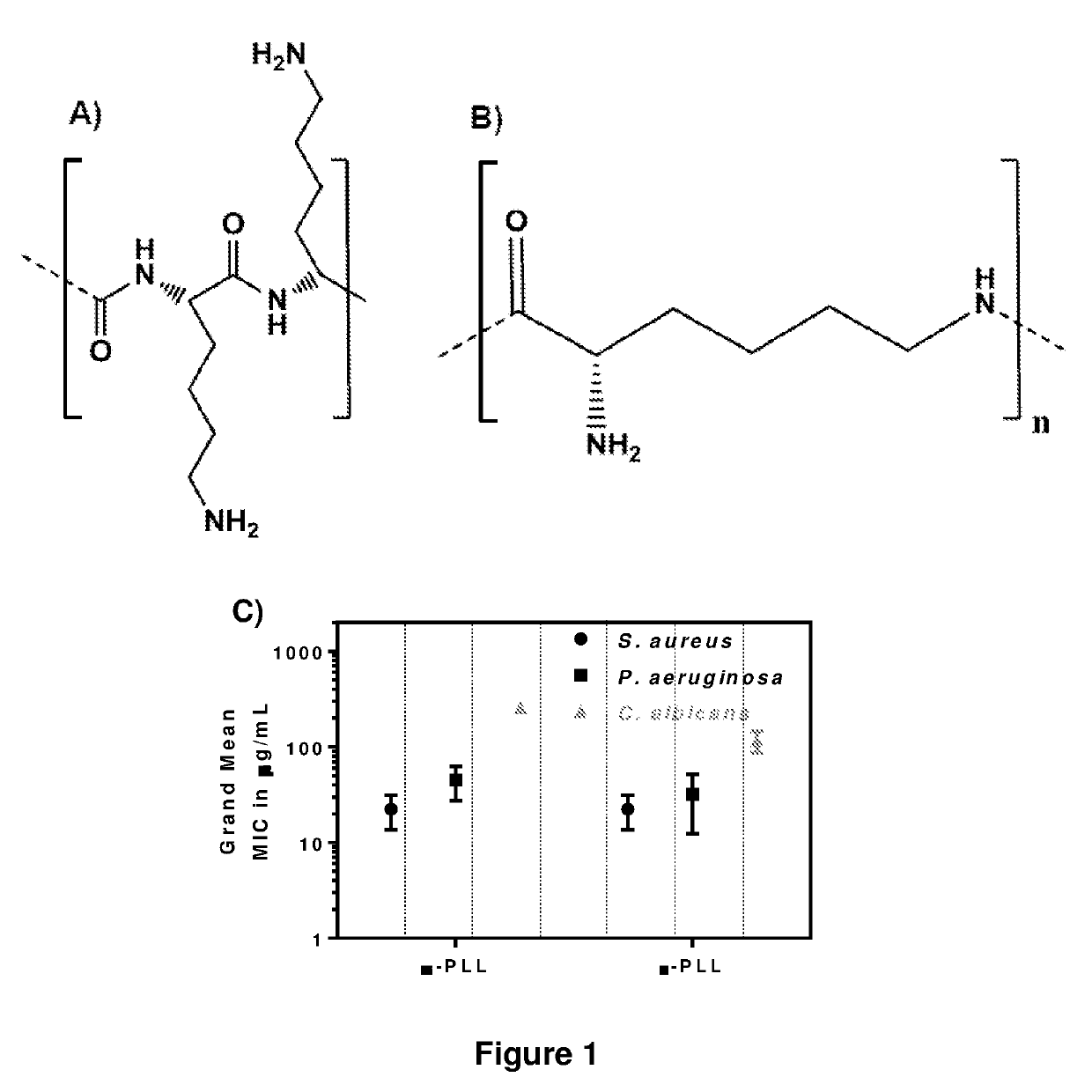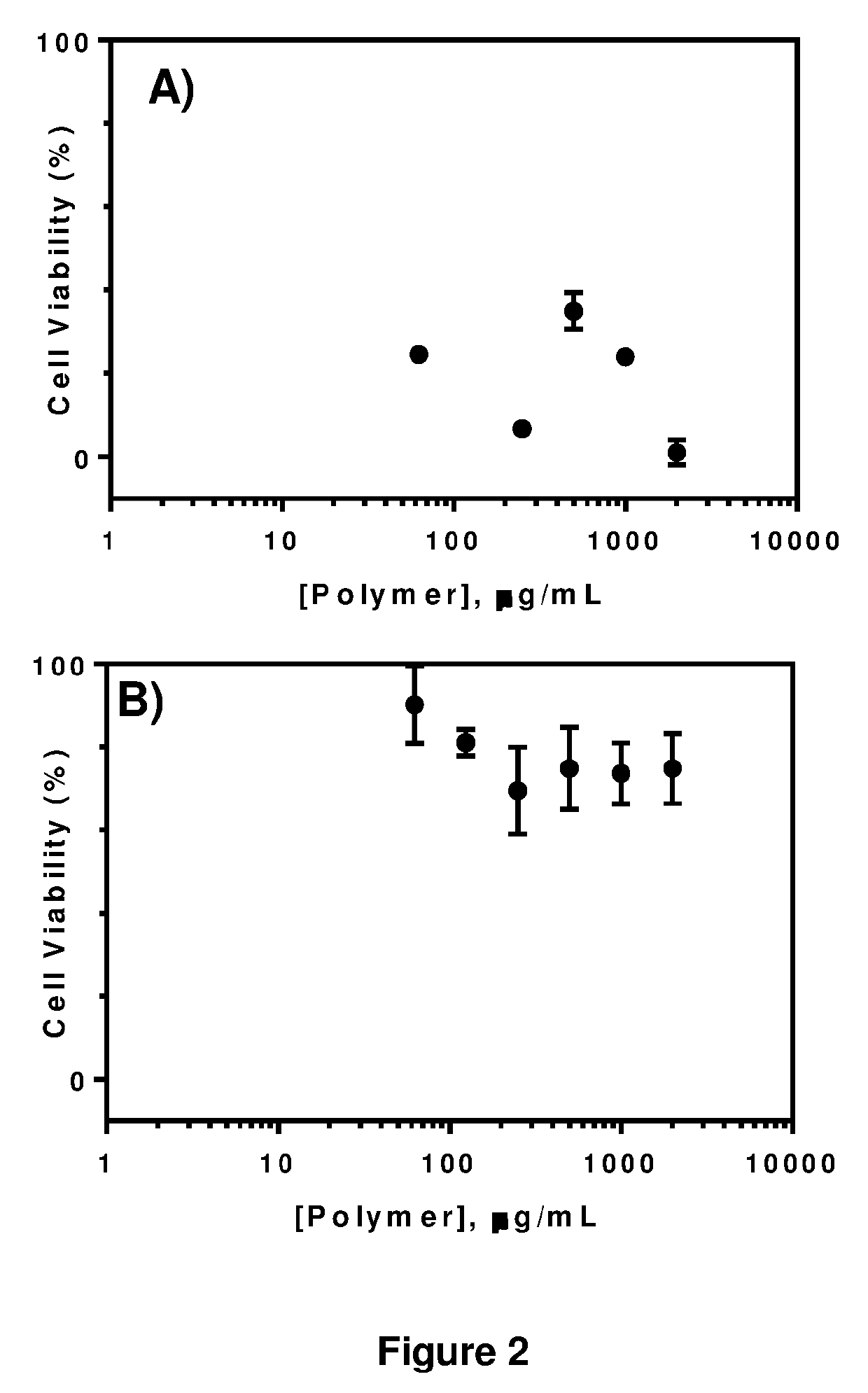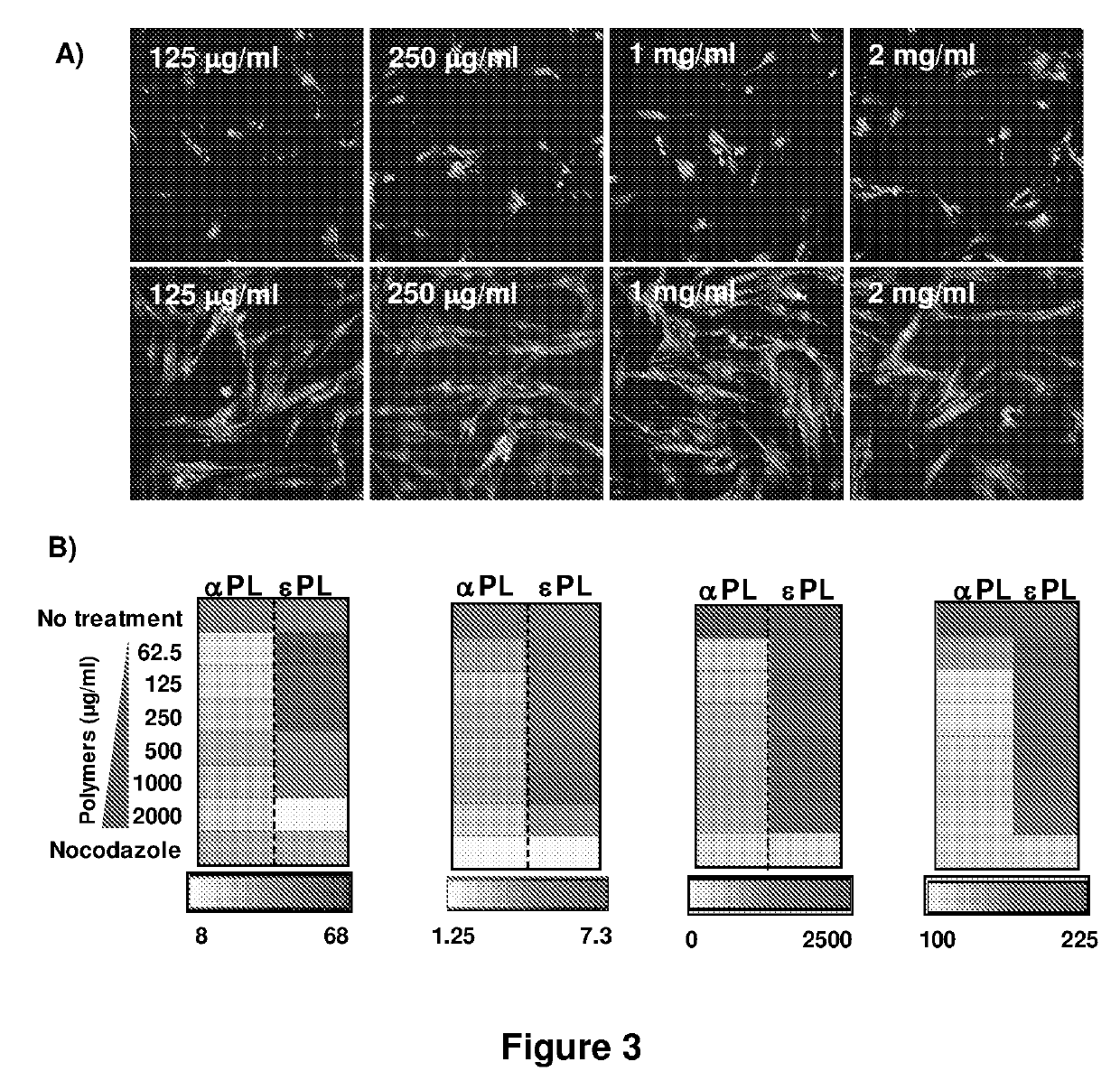Antimicrobial peptides comprising epsilon lysine residues
a technology of epsilon lysine and antimicrobial peptides, which is applied in the direction of antibacterial agents, peptide sources, peptide/protein ingredients, etc., can solve the problems of affecting the safety of peptides, affecting the therapeutic index of isolated peptides, and affecting the development of new antibiotics. , to achieve the effect of improving the therapeutic index (safety) of isolated peptides
- Summary
- Abstract
- Description
- Claims
- Application Information
AI Technical Summary
Benefits of technology
Problems solved by technology
Method used
Image
Examples
example 1
bial Properties and Cytotoxicity of Alpha-(αPL) and Epsilon-Poly-L-Lysines (εPL)
[0138]εPL and poly-gamma-L-diaminobutanoic acid (γPAB) were the only naturally occurring and microbially produced cationic aminoacid homopolymers reported so far. Unlike alpha-poly(L-lysine) (PLL), εPL consisted of 25-35 L-lysine residues which are connected by α-carboxyl and ε-amino groups of the monomers, respectively (FIGS. 1A and B). εPL had been shown to display broad spectrum antimicrobial activity against Gram+, Gram-, yeasts and fungal pathogens and the activity was superior to γPAB. εPL was classified as the “generally regarded as safe” (GRAS) by the US FDA and used as food preservative in the US, Korea and Japan. However, the antimicrobial properties of this versatile US FDA approved polymer had not been explored in great details against drug-resistant pathogens. In view of the similar chemical composition, the minimum inhibitory concentrations (MICs) of αPL and εPL against 5 different strains ...
example 2
ity of αPL and εPL Assessed by MTT and High Content Analysis (HCA)
[0139]The cytotoxicity of cationic polymers for primary human dermal fibroblasts (HDFs) was assessed by MTT assay. FIGS. 2A and B compared the metabolic activity of HDFs treated with varying concentrations of αPL and εPL. At low concentrations, αPL inhibited the metabolic activity of HDFs whereas εPL did not alter the properties even at the highest concentrations (2 mg / mL) tested. Consistent with these results, HCA analysis indicated that HDFs exposed to αPL displayed considerable abnormalities in cellular morphology whereas cells exposed to εPL remained similar as untreated control (FIG. 3). Morphological analysis indicated that HDFs exposed to εPL did not show apparent change in 4 quantitative parameters: average cells / field, cell shape factor, cell area and nuclear area, which represented the status of cell health even at elevated polymer concentrations. Cells exposed to αPL, however, displayed profound changes in ...
example 3
ctrum Antimicrobial Properties of εPL
[0140]Encouraged by the lack of any cytotoxicity for the mammalian cells, the antimicrobial properties of εPL against a panel of antibiotic-resistant strains of Gram-positive and Gram-negative bacteria and filamentous fungi were examined. Table 2 listed the range of MIC values of εPL against a panel of pathogenic Gram-positive, Gram-negative and fungal strains. The values were compared with broad-spectrum ophthalmic antibacterial / antifungal drugs. The results indicated that the MIC of εPL did not shift significantly for various antibiotic-resistant strains whereas a number of strains displayed remarkable resistant to tobramycin. In a static biofilm model, εPL caused considerable decrease (>90%) in the biofilm burden of PA01 strains at 10×MIC (FIG. 4) and the activity was superior to cationic cyclic lipopeptide, polymyxin B. The polymer also decreased the viability of fungal hyphal cells with an IC50 of 30.8±3.8 μg / ml (FIG. 5A) and the value was h...
PUM
| Property | Measurement | Unit |
|---|---|---|
| Fraction | aaaaa | aaaaa |
| Fraction | aaaaa | aaaaa |
| Density | aaaaa | aaaaa |
Abstract
Description
Claims
Application Information
 Login to View More
Login to View More - R&D
- Intellectual Property
- Life Sciences
- Materials
- Tech Scout
- Unparalleled Data Quality
- Higher Quality Content
- 60% Fewer Hallucinations
Browse by: Latest US Patents, China's latest patents, Technical Efficacy Thesaurus, Application Domain, Technology Topic, Popular Technical Reports.
© 2025 PatSnap. All rights reserved.Legal|Privacy policy|Modern Slavery Act Transparency Statement|Sitemap|About US| Contact US: help@patsnap.com



